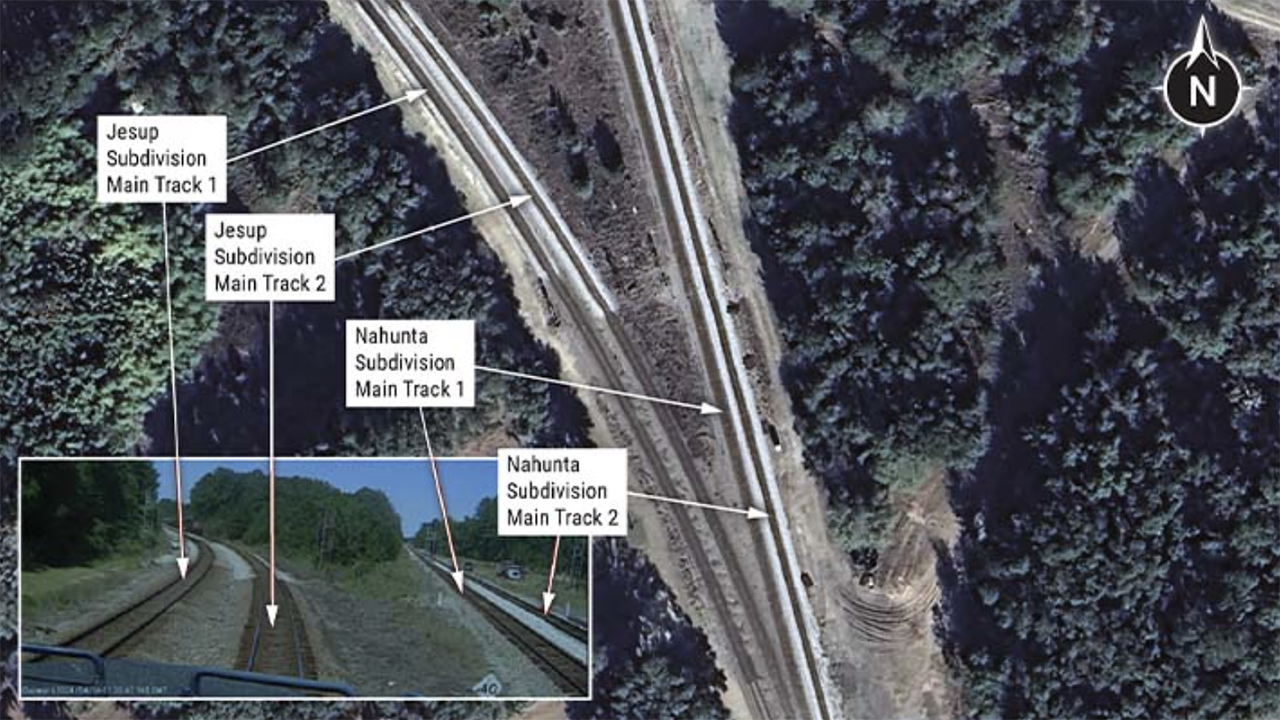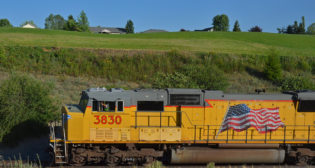
NTSB Issues Preliminary Report on 2024 CSX Head-On Collision
Written by Marybeth Luczak, Executive Editor
(NTSB Diagram)
The National Transportation Safety Board (NTSB) has released a preliminary report for its ongoing investigation of the April 15, 2024, head-on collision of a CSX train with a CSX stationary, loaded rock train in Folkston, Ga. The agency said future work will focus on “the industry-wide operational procedures for train movements during a signal suspension, training standards on the manual operation of dual-controlled switches, and the effectiveness of job briefings.”
What happened? Northbound CSX intermodal train I03215 collided head on with stationary, loaded rock train CSX L74314 on CSX’s Jesup Subdivision Main Track 2 in Folkston, according to NTSB, which noted that its investigation information is “preliminary and subject to change.” Train I03215, comprising two locomotives and 27 railcars, was traveling on CSX’s Nahunta Subdivision Main Track 1 en route to Florence, S.C., when NTSB said it “was inadvertently diverted” onto the Jesup Subdivision Main Track 2, colliding with train L74314, which consisted of three locomotives and 83 railcars (see diagram, top). According to NTSB, a total of five locomotives were damaged, and two of them derailed; a total of three railcars derailed, none of which carried hazardous materials. Both trains had two-person crews. Visibility conditions at the time of the collision “were clear and unobstructed,” reported NTSB, and the weather was 82°F with no precipitation.
NTSB said that the two crewmembers of train I03215 and one crewmember of train L74314 were sent to the hospital for “non-life-threatening injuries.” At the time of the NTSB report, CSX had estimated damages at $720,000.
Prior to the collision, the accident location was “placed under a signal suspension for maintenance and upgrades, and track warrant authority was under observation,” according to NTSB, which noted that CSX had assigned a conductor to serve as a switch tender, who would “hand throw switches controlling the alignments for train movements between tracks” and be “responsible for a total of four dual-control power switches that were placed in hand throw for the signal outage.”
NTSB reported that Train I03215 “was traveling northbound at about 38 mph on the Nahunta Subdivision Main Track 1 when it approached the stretch of track under signal suspension. The switch for the Nahunta Subdivision Main Track 1 onto Jesup Subdivision Main Track 2 was improperly aligned causing intermodal train I03215, as it operated through the switch, to deviate onto Jesup Subdivision Main Track 2, at which point it collided head on with stationary rock train L74314 at a speed of 28 mph.”
NTSB said that while on scene, its investigators reviewed image recordings, event recorder data, signal logs, and operating procedures; inspected the dual-controlled switches; and completed interviews. Its investigation continues.
Parties to the investigation include the Federal Railroad Administration; CSX; Brotherhood of Locomotive Engineers and Trainmen; International Association of Sheet Metal, Air, Rail and Transportation Workers; and Brotherhood of Railroad Signalmen.
According to NTSB, the timing between beginning an investigation and a “probable cause determination and report varies based on the complexity of the investigation and the workload of the agency’s investigators.” Generally, the agency tries to complete an investigation within 12 to 24 months, it said.



